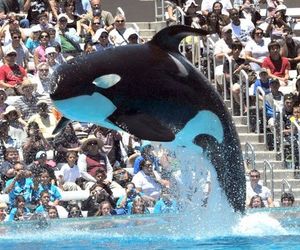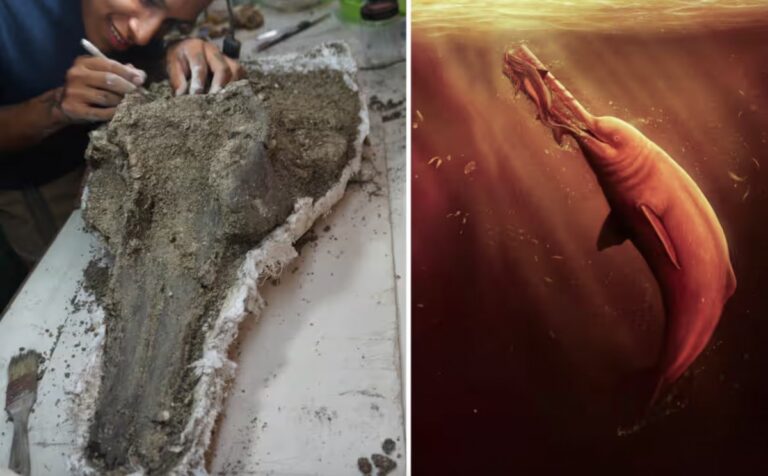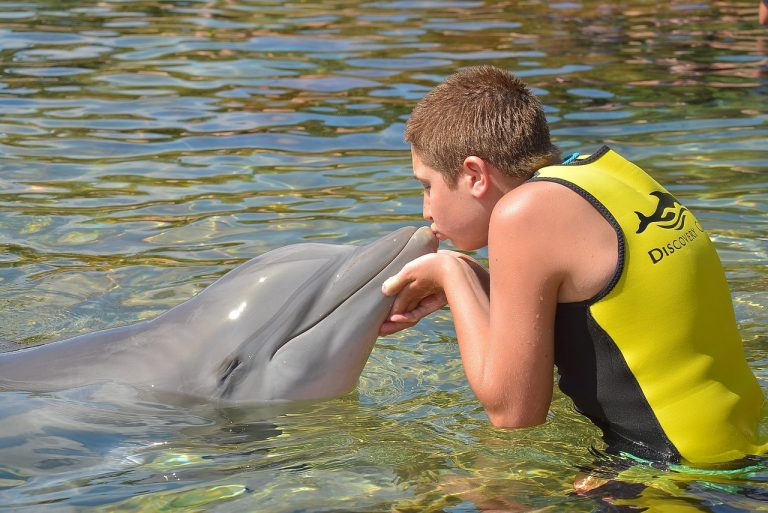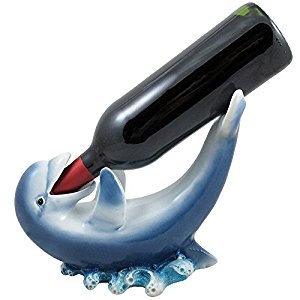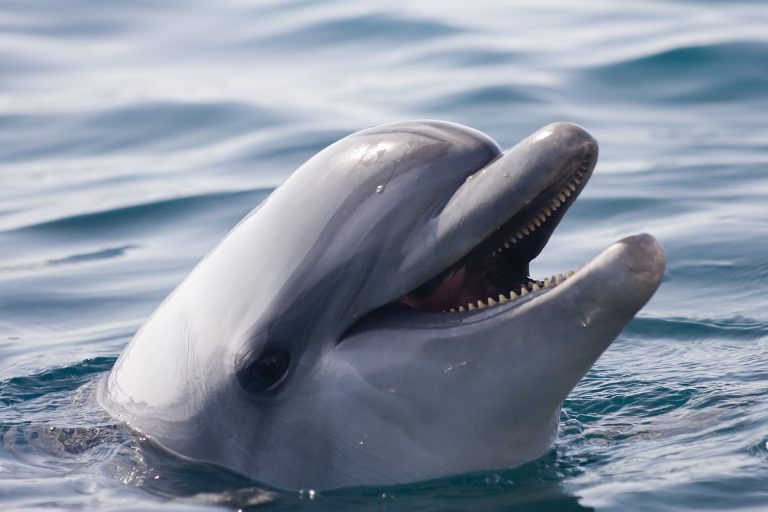Dolphin Pods: What Are They Really All About?
Have you ever wondered why dolphin pods even exist in the first place? The reasons are explained below.
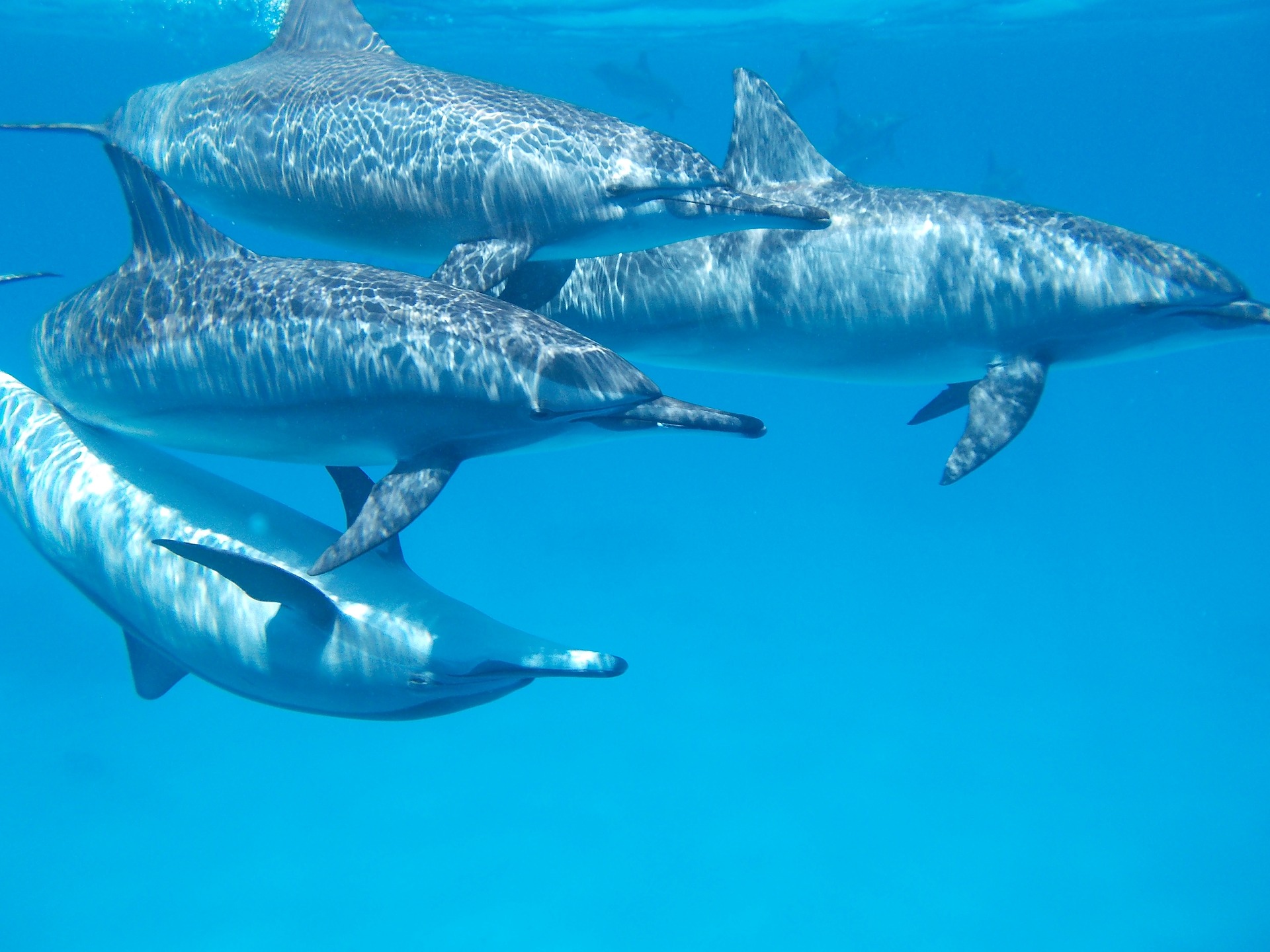
Dolphins are no doubt one of the world’s most loved and well-known aquatic mammals. These highly intelligent beings can live for up to 50 years or more and typically range in size from 2.3 meters to the largest dolphins, the killer whales (Orcas), that measure averagely 8 meters (26 feet).
These are very social creatures, hardly ever seen alone. And, they travel in groups better known as dolphin pods. A dolphin will live most of its life in one of these pods but can mingle with others from time to time.
What Are Dolphin Pods?
Dolphin pods are typically made up of approximately 11 to 12 dolphins. But these numbers vary tremendously!
It’s not uncommon to see extremely large groups in the wild of over 1,000 individuals spanning up to a mile long. Ships and other oceangoing vessels have to stop to allow these “super pods” or “herds” pass for safety reasons.
Dolphin pods may be same-sex only or several adult females, males and calves, travelling together in herds of several hundred individuals. Such pods may join together forming larger groups in places rich with food to feed but never for very long. Dolphins can and sometimes do travel alone but remain for the most part within their social groupings.
Coming together to form a pod increases every individual dolphin’s chances of survival.
Types of Dolphin Pods
Commonly, there are three recognized types of pods:
- Adult Males; quite often, these pods are made up of siblings, on leaving their juvenile pod they join with other males and connect, forming partnerships that can last for anything up to twenty years.
- Juvenile Pods; at around age 9 or 10, both males and females leave their breeding group and connect with other dolphins of around the same age, occasionally returning to their mothers from time to time before rejoining their juvenile pod.
- Nursery Groups (mothers and offspring); calves remain with their mothers from birth up until several years after weaning. Females when pregnant, often return to their original pod to birth their young thus making up a multi-generational grouping.
- Super Pods (otherwise known as a herd); can be made up of several groups, sometimes exceeding over a thousand dolphins.
Social Structure And Communication
Dolphins are a male lead hierarchy, and while most male mammals would not work with one another for a chance to mate with females, male dolphins do.
Normally working in pairs, they join together in impressing females with their behavior to ‘herd’ prospective mates into a breeding situation. Dominance within the pod, depending on species, is established by the most dominant animal expressing aggressively toward the other males by chasing, raking, tail-slapping and jaw-popping.
Interestingly, they use acoustic and non-acoustic means of communication along with rubbing or bumping up against one another. Researchers have seen that every dolphin has its own specific whistle pattern different from every other animal. So, they named this sound “signature whistle”.
In fact, they believe dolphins can remember the specific whistle pattern of their “friends or foes” for up to 20 years. That “social memory” is the longest ever recorded in the entire animal kingdom. The advantage of this memory is that it helps dolphins as they move along in life joining and splitting from different pods.
An individual dolphin is not limited to a single pod for life. They can move from one pod to another to improve their chances of hunting, social interaction, and protection.
Benefits Of Dolphin Pods
Pods provide several advantages for dolphins.
-
Primarily protection
When attacked, dolphins can use their speed and agility to fight off predators. Superior numbers band together forming tight-knit groups to give the illusion they are a much larger singular species. This protects some of the smaller dolphin species from the larger ones like the killer whale, for example.
Predators will first prey on the old, weak or young should they become separated from a pod or herd.
-
Interaction with sharks
It’s important to mention at this point that some species of sharks, particularly Tiger sharks, Dusky sharks, and Bull sharks are known predators of dolphins.
Therefore, when they meet out at sea, species like the bottlenose dolphins will react very strongly to any of these sharks mentioned above. They may ignore them, avoid them, or fight them off aggressively. It’s not uncommon for dolphins to attack and kill sharks.
Several cases of killer whales attacking and killing great white sharks are proof of this.
-
Feeding and foraging
Another benefit is foraging for food. But in this case, smaller groups appear to be more efficient. That’s because feeding in very large groups often creates too much competition for the available food supply.
On the other hand, feeding alone is inefficient and potentially dangerous.
-
Preserving the species
Protecting the young is a strong motivation for cooperation particularly between females within dolphin pods.
-
Sleeping and resting
While resting, dolphins sleep or nap for small periods of time from as little to two or three minutes during the day and up to seven or eight minutes during the night. At these times, they tighten their group formation and take it in turn for slow breathing intervals.
-
Family life
Dolphins, much like humans, being highly social, thrive when with family; communicative, caring, intelligent aquatic mammals that behave altruistically, helping one another throughout their every day lives.
All these facts support the observation that dolphins are some of the most social creatures in the seas and oceans today.

